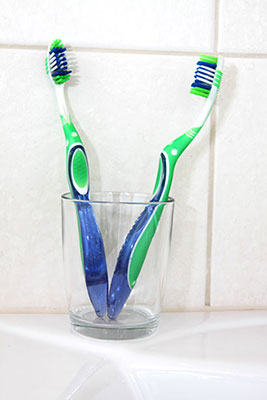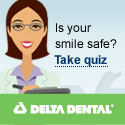
To be sure, toothbrushes have come a long way from 5,000 years ago when the first ancient civilizations cleaned their teeth with a chew stick, a thin twig with a frayed end. Since then, manual toothbrushes have evolved and stayed fairly consistent in design and performance over the past two centuries.
In the 1960s came the first powered toothbrushes, but it wasn’t until the past decade that they began surging in popularity, now comprising more than 40 percent of all toothbrush sales.
One thing is easy to see: Powered toothbrushes cost more. A manual brush typically sells for under $10, while powered brushes can range in price from $5 to $25 for the battery-powered models, and up to $100 for sonic dental products.
But is the extra price worth it? The answer to that question isn’t as clear.
First, why is brushing so important? Brushing your teeth removes food, which not only reduces bad breath but also prevents sugar from sitting on the surface of the tooth for long periods of time and causing cavities. Brushing also removes plaque, a thin film of bacteria that can irritate the gums, causing bleeding and gingivitis. Plaque can harden into tartar, which ultimately can lead to gum disease.
Manual brushing typically results in about 300 strokes per minute, while electric brushes create 3,000 to 7,000 strokes per minute, and sonic brushes even more, at 30,000 to 40,000 strokes per minute.
Despite those obvious differences, research comparing the effectiveness of brushing with manual and powered toothbrushes have shown mixed results.
In 2012 a meta-analysis of research in the question, meaning a review of multiple studies, looked at three clinical trials published from 2002 to 2005, involving 56 people. In general they found no evidence of a statistically significant difference in how well powered and manual brushing reduced plaque and gingivitis.
But a 2013 study of 462 subjects in a clinical trial found that oscillating/rotating power toothbrushes were consistently superior in removing plaque in hard-to-clean areas of the mouth.
In light of the lack of a consensus in the scientific community, the American Dental Association has not taken a position on the question, instead simply urging people to use a brush they are comfortable with. That makes it more likely you will brush twice a day, as the ADA recommends.
The ADA also recommends only using a brush that bears its Seal of Acceptance.
The association does not that children often think using powered toothbrushes is fun, so parents have an easier time getting them to brush regularly.
Did you find these resources helpful from our Broomfield CO dentist? Then others will too! Use the sharing buttons to pass along this article to your friends and followers.




No comments yet.